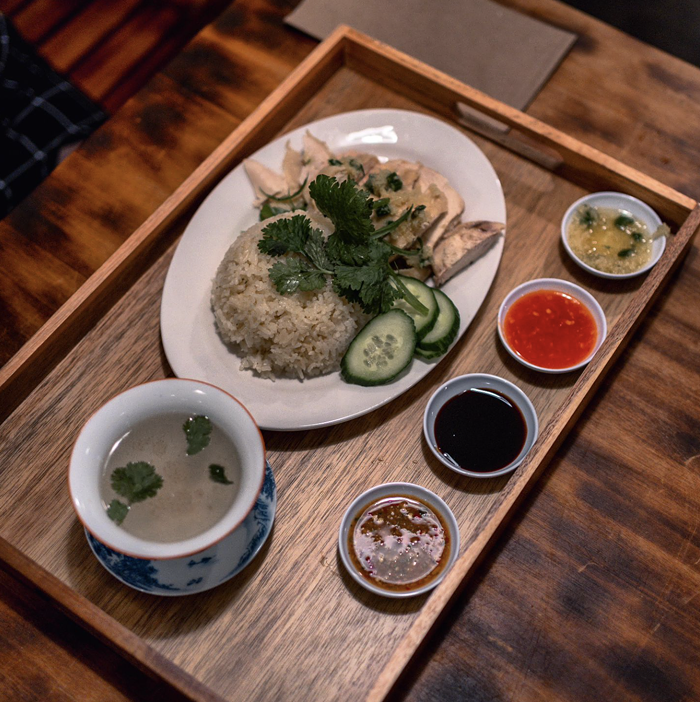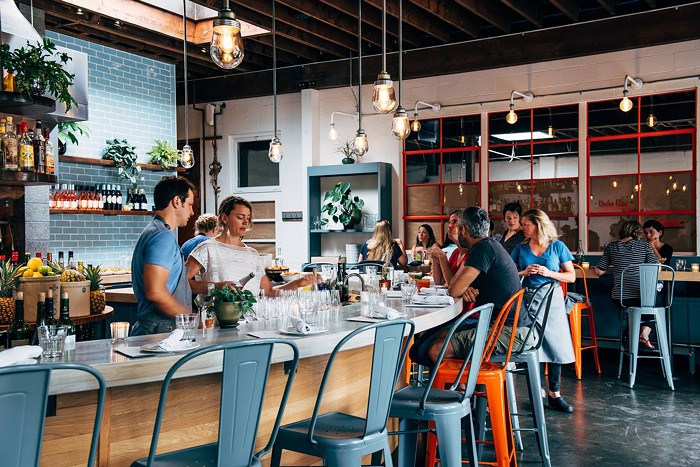
A few months ago, while writing a review of Capitol Hill’s Nue, I interviewed owner (and avid traveler) Chris Cvetkovich about his vision for the restaurant. He told me Nue’s menu, a sort of global greatest-hits list in which street food from Korea, Vietnam, Jamaica, Latvia, and Syria exist side by side, was inspired by dishes he enjoyed traveling abroad that were frustratingly hard to find in Seattle.
"I was always wondering why the hell I couldn't find something back in Seattle, why nobody was making it," Cvetokvich said. "Take Thai food. We have so many Thai restaurants here, but they’re all making the same fifteen items. There are thousands of other Thai dishes and we’re just not making them here, even though the ingredients are available."
While Cvetokovich’s observations were certainly true a few years ago, thankfully things are changing. Increasingly, Thai restaurants around town are expanding their menus to include regional specialties—specifically Isan food, the fiery, funky, pungent cuisine of Northeast Thailand that shares much of its culture and flavors with Laos. At Capitol Hill's recently opened Soi, the focus is almost exclusively on Isan dishes.
Up north on Aurora at Pop Pop, you can order the green papaya salad Isan-style, with tiny salted crabs. You'll need to crack through the shells and slurp out the little bits of gelatinous meat. But it's worth it: The flavor is incredible—briny and funky, as though the crabs journeyed straight from the dark, primordial depths of the sea to your table—and perfectly contrasts the salad's freshness and acidity. The restaurant also serves a fantastic gai yang, a ubiquitous Isan dish of lemongrass-marinated, charcoal-grilled chicken.
At Song Phang Kong in the ID, owner Beng Rajsombath offers Thai standbys like pad thai, but also a few specialties from her native Laos, including a green papaya salad tossed with a sauce of fermented anchovies and fantastic sai ua, sour pork sausages fragrant with lemongrass, lime leaf, and cilantro. And on Capitol Hill, Manao Thai Street Eats regularly offers Isan specials like gai yang and nom tok moo yang, a spicy salad made of grilled pork.
My current favorite Isan dish is one that I randomly tried a few months ago at Ballard's Pestle Rock—a lunch special called goong op woon sen: prawns and glass noodles baked with pork belly, cilantro root, ginger, and lots of black pepper. (I've since eaten it at Soi, where it is a permanent fixture on the menu under the name koong ob soon wen.) It's brightened by a garnish of celery leaves that brings a fresh, vegetal note. It's not necessarily the spiciest dish, and the flavors are less aggressive (though they're still quite strong) than what I was expecting when I ordered it, but I was struck by it because of it's both straightforward and comforting.
Traditionally, sweet prawns are baked in a clay pot with slippery noodles made from mung bean, along with pieces of rich, fatty pork belly, though at Pestle Rock the dish was served in a metal bowl. The spice and heat came, not from chilies, but from whole black peppercorns and slices of ginger. The peppercorns and ginger were still a bit raw, which made them a little too potent. The best elements are the thin strands of cilantro root mixed amid the noodles. You rarely see cilantro root listed as an ingredient in Thai dishes or featured in a dish, but once you taste them—that familiar cilantro flavor, but less fresh, more earthy, peppery, and subtle—you realize how much they are used to flavor curry pastes and other dishes. Pestle Rock also serves its goong op woon sen with a wonderful, tart sauce made with lime juice, garlic, and bird chilies, which enlivened the whole dish.
At Soi, the koong ob woon sen ($16) is served in a claypot, and everything inside—particularly the noodles, prawns, and pork—were noticeably more tender and moist. The black pepper and ginger, while still strong, were better integrated into the dish, bringing a subtle heat and kick that built up with every bite, rather than coming on strong from the get-go. I found myself missing the cilantro root and tangy lime sauce from Pestle Rock, but that didn't stop me from slurping up all of the noodles in the bowl.
Here's hoping koong ob woon sen turns up on even more menus around town.


















